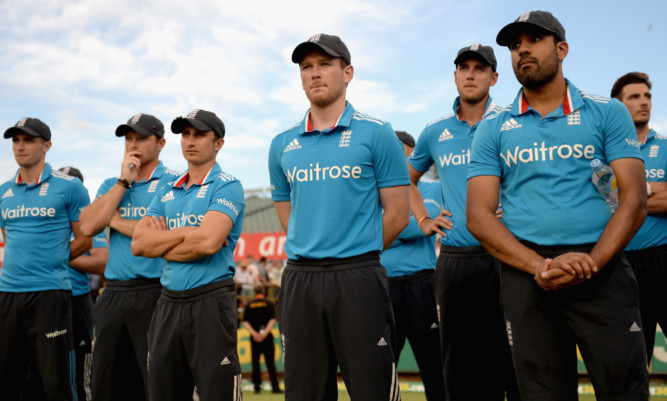The England team entering the ICC World Cup 2015 are much like any group of lads leaving the pub at 11pm.
There’s the one bloke in this case Kevin Pietersen who’s irritated everyone by claiming he’s drunk the most pints, though everyone knows he hasn’t.
Then there’s the ageing raconteur the now decapped Alistair Cook who just can’t down pints like he used to.
Younger men Eoin Morgan specifically have taken to directing the festivities, but it’s starting to seem that he’s not much good at drinking either.
As they stumble out of the door, worse for wear but not drunk, their night hangs in the balance.
They can focus on what has gone before and leave in a huff, perhaps with a quick kebab on the way home to brighten, if not reverse, the situation.
Or they can rally round, head to a nightclub (of the Fat Sams ilk) and drink themselves silly like they used to.
Despite England players’ known penchant for nights out, this is, of course, a metaphor.
https://youtube.com/watch?v=imZ48Wj7M0k%3Frel%3D0
But, as the new-look squad prepare to face Australia (3am, Feb 14), they must decide in which direction they want to head.
There will always be snipping from the boundaries, with Geoffrey Boycott’s most recent intervention being the latest in a long list of unhelpful asides.
What Eoin Morgan and his men must now do is rally and focus on the future. They can play well and could do well, but only if they leave their ghosts in the closet.
They must view qualification from their group as a certainty and should be looking to reach the semi-finals.
The statistics are against them: four of their top batsmen (Gary Ballance, Ravi Bopara, James Taylor and Joe Root) all feature in the top 20 slowest strike rates the average number of runs per 100 balls faced.
They have never succeeded in chasing a total above 240, which is low for modern day ODI games.
England hit an average of 17 fours per game bettering only Zimbabwe.
But the side does have a good mix of youth and experience. The win against an (admittedly lacklustre) West Indies, as well as two recent ODI wins against India, can only reinforce the team’s confidence.
The ultimate outcome will depend largely on where Morgan chooses to lead his lads to restart the night out, or slump in the kebab house.
